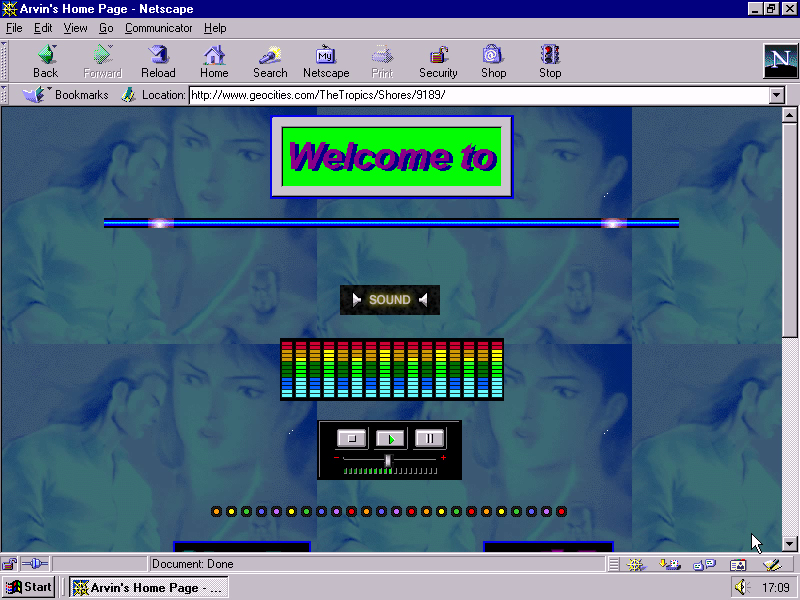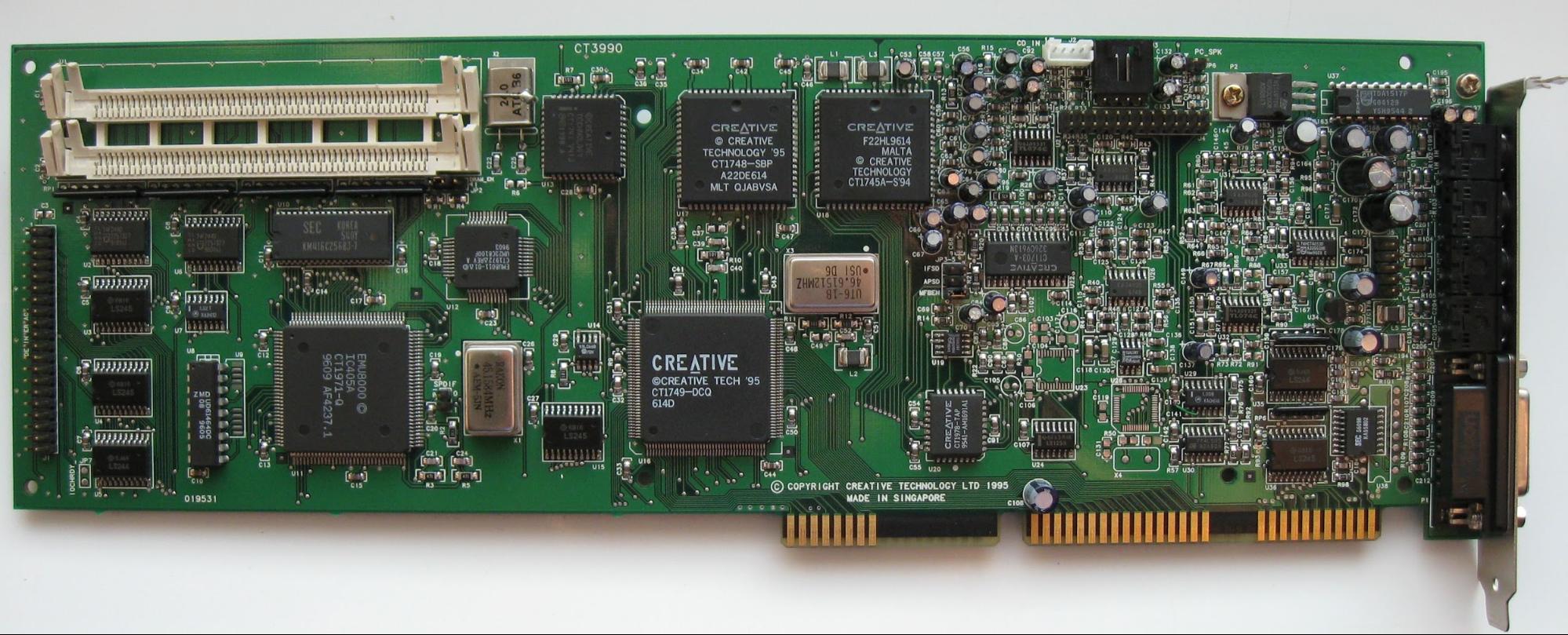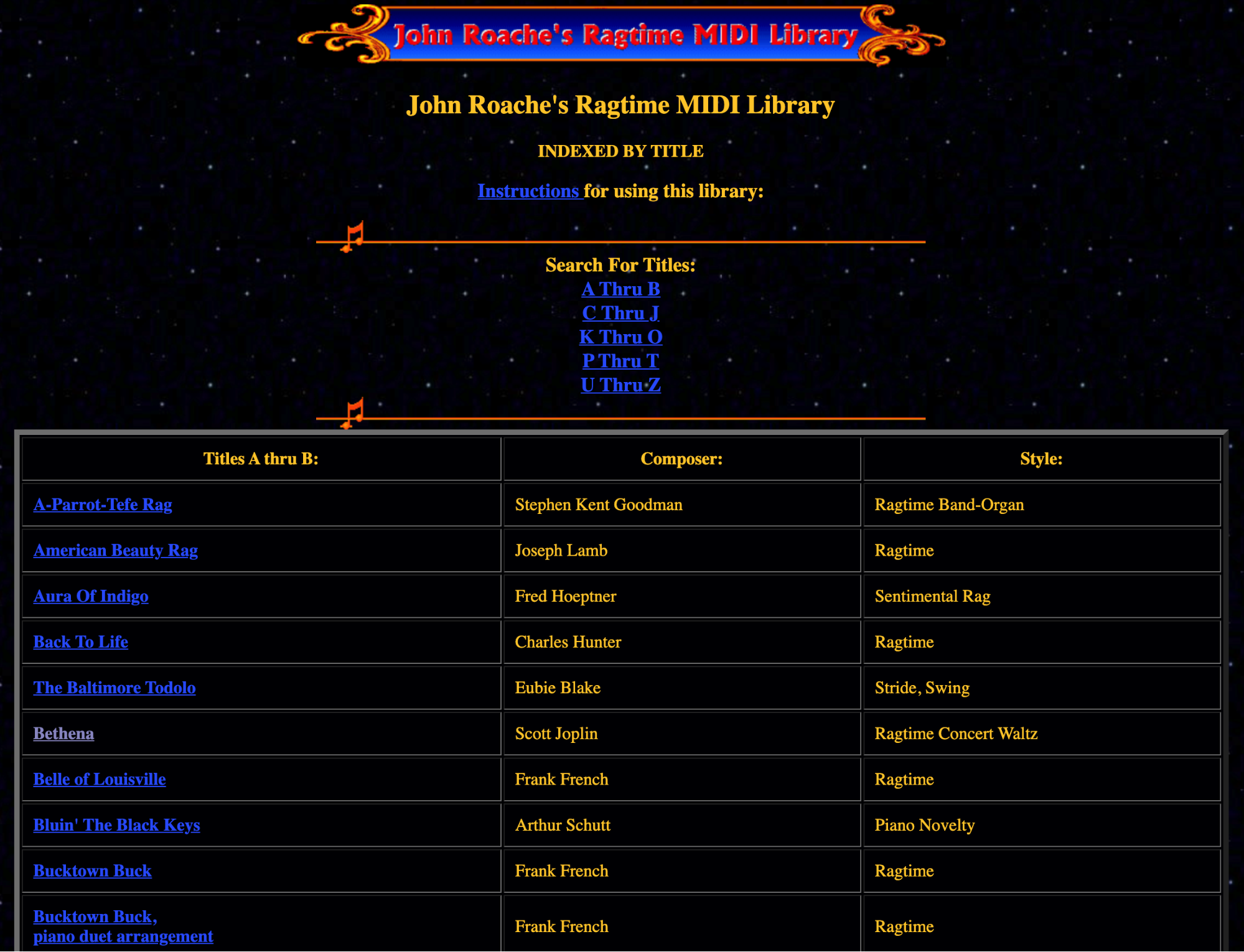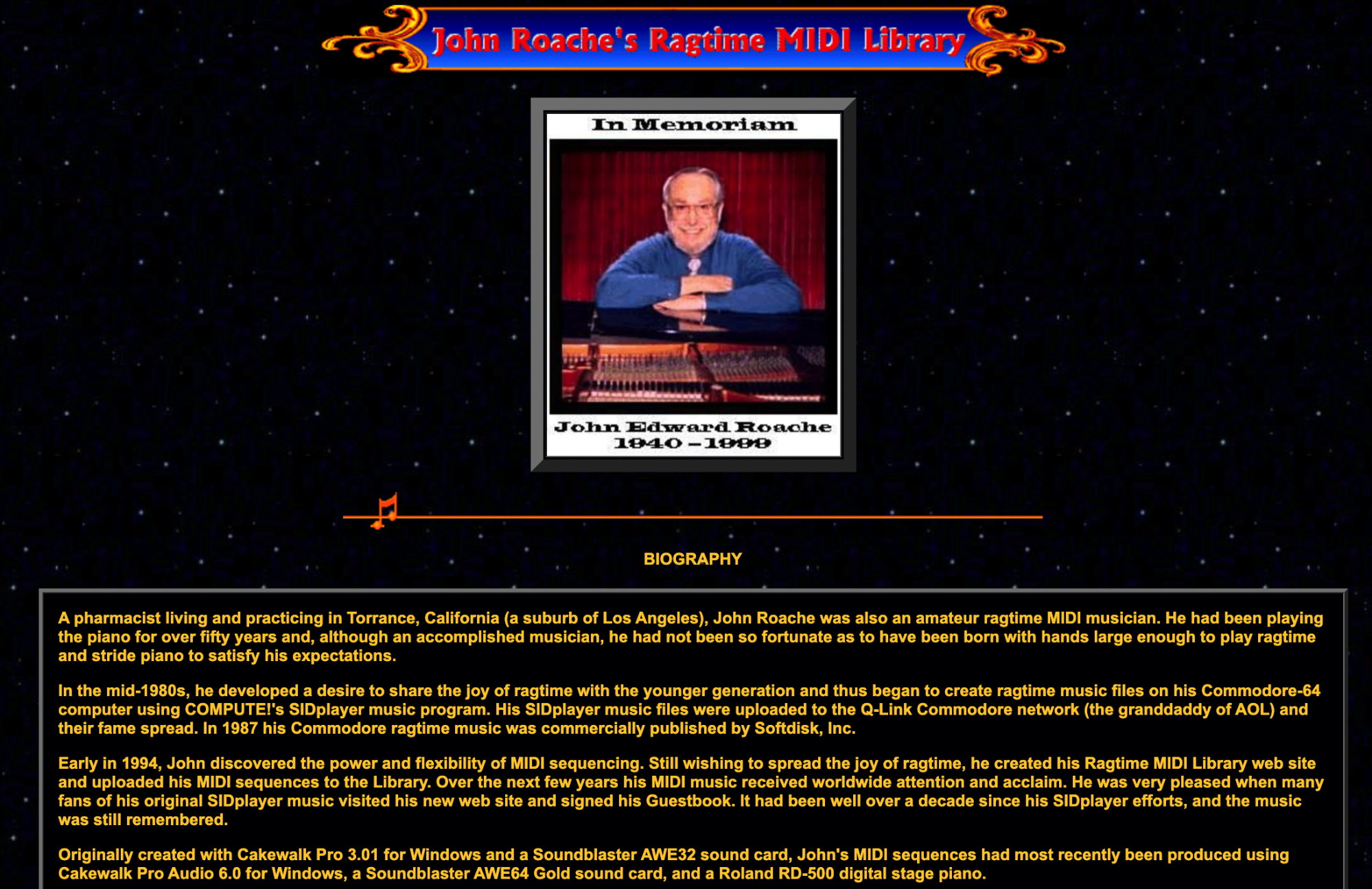The Internet’s First Hit File Format Wasn’t the MP3. It Was MIDI
Credit to Author: Ernie Smith| Date: Fri, 08 Nov 2019 13:45:31 +0000
A version of this post originally appeared on Tedium, a twice-weekly newsletter that hunts for the end of the long tail.
For some reason, when we tiptoe around the start of November each year, I think about “November Rain.”
I’m not really a hard rock guy, but it’s a great song, one that Guns N’ Roses has not been able to top in the 27 and a half years since it became the most audacious thing on the radio. It’s the longest song ever to become a Top 10 hit on the Billboard Hot 100—a song that was longer than “American Pie.” And for years, it was a high watermark of popular music.
It had a music video that was pretty much the coolest thing MTV ever aired—and, decades later, became one of the most popular music videos in YouTube history.
It was nine minutes long. It basically covered the entire human experience—if every human was like Axl Rose.
But as great of a song as it is, it’s probably even more amazing as a MIDI file—which is the way it would have been shared on the internet around 1996 or so—because it manages to capture the entire spirit of the song in less than 50 kilobytes. (Well, depending on your sound card.)
Today’s Tedium ponders the oh-so-brief period in which MIDI files were a big part of the internet experience.

How the browser wars gave MIDI a big leg up with consumers
In 1981, a number of stakeholders in electronic music put together an academic paper that ultimately changed the way that people created music.
The paper recommended a “Universal Synthesizer Interface” for musical instruments as a way to ensure that players could translate their musical data from one instrument to another. This technology initially relied on phone jacks with a focus on synthesizers, but it eventually evolved into Musical Instrument Digital Interface, or MIDI, in 1983, which mixed both hardware interfaces with a data-distribution protocol.
The MIDI format never went away—and in fact, it’s become a key way that musicians work together over the past 40 years. The MIDI Manufacturers Association is even close to finalizing version 2.0—a major milestone for a protocol whose initial 1.0 variant defined the modern state of music.
MIDI is an underlying layer below much of our popular music, but for most of its history, it has rarely bubbled up to the surface to the point where regular consumers cared about it.
However, there was a brief period in which it became a massive success with people who might have never thought about listening to synthesizer-based music otherwise. And the reason for that comes down to its size. Because, at its core, it’s just a bunch of computer data, ones and zeros.
MIDI is small. And that made it a great format to transfer music online—especially since, by the mid–1990s, basically any home computer you could buy at a store included a sound card of some kind.
And in the hunt for additional features, the two primary developers of web browsers during the era—Microsoft and Netscape—added functionality that made audio files accessible when loading websites, whether as background music or as embedded files with a dedicated player. Either way, it was one of the earliest examples of a plug-in that much of the public ran into—even before Flash.
In particular, Microsoft’s Internet Explorer supported it as far back as version 1.0, while Netscape Navigator supported it with the use of a plug-in and added native support starting in version 3.0. There was a period, during the peak of the Geocities era, where loading a website with a MIDI file was a common occurrence.
When Geocities was shut down in 2019, the MIDI files found on various websites during that time were collected by The Archive Team. The Internet Archive includes more than 51,000 files in The Geocities MIDI Collection. The list of songs, which can be seen here, is very much a time capsule to a specific era. Have a favorite song from 1998? Search for it in here, sans spaces, and you’ll probably find it! (I found at least seven separate versions of “November Rain” in the archive.)
They sound like a musical time capsule, and evoke memories of a specific time for many web surfers of the era.
“Even in an age of high-quality MP3s, the chintzy sounds of MIDI files resonate on the Web,” writer Douglas Wolk wrote for Spin in 2000, immediately adding the reason: “They play on just about anything smarter than a Tupperware bowl, and they’re also very small.”

One thing they were not, however, was consistent. At the time that MIDI files became commonplace thanks to sound cards, the quality of those sound cards varied significantly; the Sound Blaster acted as something of a baseline, but there was no guarantee of consistency with a MIDI file in the late 90s. A MIDI file on a no-name sound card floating in a cheap Packard Bell system with reused parts likely didn’t sound quite as alive as it might have on a Sound Blaster AWE32, a sound card so maximalist that it came with its own dedicated memory expansion slots.
MIDI files are sold commercially on floppies—even in 2019
Now, it should be noted that using Standard MIDI files as content distribution tools was not new by the time it hit the web browser. In 1983, a company called Synth-Bank—operated by Bryan Bell, a collaborator with Santana and Herbie Hancock—originated the idea of sharing musical files via modems, using early online services of the era such as GE Link and AppleLink for distribution. The idea was intended for professional musicians, as a possible way of making the process of collaboration easier.
“I’m trying to set up worldwide access for sound programmers and end users to be able to get together without the problems of artist unavailability, high overhead of traveling, and mailing disk media back and forth,” Bell told Network World in 1986.
And there were efforts to sell MIDI files on the commercial market. Most notably, Yamaha sold a player piano called the Disklavier, which uses DRM-encoded floppy disks and CD-ROMs to manage MIDI files. (If you don’t need a full piano, Roland sells a speaker that plays MIDI files via floppy; YouTuber Techmoan featured it on his channel in 2017.) The use case, and the floppies, were so obscure that extracting the MIDI files from the DRM was actually quite a challenge for Hackaday contributing editor Tom Nardi earlier this year.
As you might gather from all that, MIDI files were produced and sold with similar commercial intentions to standard music—but were rarely treated with the same level of legal scrutiny as their big brother, the MP3.
It may be weird to think about, but we might have been pirating MIDI files back then without even realizing it.
“The output of Standard MIDI files are works of authorship copyrightable as sound recordings since the information in the file causes the sound device to render the pitch, timbre, speed, duration and volume of the musical notes in a certain order, as does a player piano in conjunction with a piano roll, or a compact disc player in conjunction with a compact disc.”
— Charlotte Douglass, the principal legal advisor to the general counsel at the U.S. Copyright Office, writing in a 1996 decision that MIDI files are considered copyrightable under the law, and therefore can be protected in the same way. This decision made it easier to license and share MIDI files with producers, though the copyright situation was something of a no man’s land online.

The MIDI musician who made it his life’s mission to keep ragtime alive
The thing that often gets lost with these compositions of popular songs done in MIDI format is that they’re often done by people, either for purposes of running a sound bank (which might come in handy, for example, with karaoke), or by amateurs trying to recreate the songs they enjoy or heard on the radio.
These are often unsung, anonymous people whose work is separated from the music they synthesized into a computer format. I’d like to tell you a little about one of those people because I think his life is pretty interesting.
John Edward Roache, who worked as a pharmacist in his day job, was a big fan of ragtime music, with five decades of experience playing the piano in some way, shape, or form, and his love of ragtime followed him into the world of modern technology as he became interested in computers.
In the 1980s, he found his first opportunity to combine the mediums through a tool called SIDPlayer, which made it possible for the Commodore 64 to produce music—including the ragtime music he loved. During that era, he started making music specifically for the SIDplayer—and helped drum up interest in the format to the point where his compositions were even sold by Softdisk, a publisher best known for fostering the careers of the developers of Doom and Quake.
Commodore, of course, faded in prominence, but by the mid–1990s, Roache had discovered MIDI—and soon, the internet discovered Roache, who had built an internet presence based on his creation of MIDI files and spreading the good word on how great ragtime music was. His AOL-based site, in its own way, helped raise Roache’s profile—as well as that of ragtime music, which had fallen into obscurity as ragtime gave way to jazz, blues, country, and eventually rock.
In a 1997 profile in The Baltimore Sun, writer Michael Himowitz seemed stunned that he found himself so sucked into Roche’s passion.
I don’t know exactly how I stumbled onto this little corner of the Web—I’d never paid much attention to ragtime before. But I spent a couple of fascinating hours listening to Roache’s music, reading his essays and exploring links to other ragtime and jazz pages. It was pure serendipity.
Then it occurred to me that I should spend more time writing about one of the things that makes the Web so special—labors of love. Unlike any medium before it, the Web gives people with unusual talents and interests a chance to share their passions with fellow enthusiasts—and with folks like me who just happen to drop by.
Roache noted that his interest in ragtime was perfect for highlighting the capabilities of the MIDI format—in part because it was a piano-driven style of music, which meant that it more or less stayed consistent no matter the quality of your sound card.
“Ragtime music is pretty good because a piano is basically a piano, and most synthesizers are good at that,” Roache told the newspaper. “But if I start doing stuff with strings and bass, what sounds good to me might not sound good to you.”
Roache’s site, which is still online today, features informative lessons on the history of the musical form, as well as Roache’s takes on classic ragtime songs by heavyweights of the genre, such as Scott Joplin and Jelly Roll Morton. Roache would spend months on his compositions, relying on a Sound Blaster AWE32 and a Roland piano to compose. (The only downside for Roache is that he felt his hands weren’t large enough to properly play ragtime.)
In a way, Roache had simply created a personal website about something he was passionate about—along with a distribution model that suited the work. But in the process, he transcended the form, and while he certainly wasn’t a household name, he had become an important part of the ragtime community in the late ’90s—recording two albums, Syncopated Odyssey and Hot Kumquats with the help of the MIDI format.

By the time he died in 1999—way before his time—he had arguably revolutionized old-timey music with the addition of technology. His site remains online to this day, a time capsule of a digital identity driven by the creative possibilities of MIDI.
For most people, the introduction of the MIDI file to the internet simply meant an opportunity to listen to music when loading a webpage, or to download music without killing their bandwidth. For John Roache, it represented a way to create and share a passion for something he really cared about.
Like many file formats, the MIDI file was never intended to be used in many of the ways it actually was.
And its moment in the sun reflected its utility during a period of time when the demand for multimedia content from the internet was growing—but the ability for computers to offer it up in a full-fat format was limited. (Stupid modems.)
The MIDI file, even taken out of its original context, offered a nice workaround of sorts.
But it’s a moment that has very much passed. Here’s a case-in-point: When I was loading up pages while researching this topic, they didn’t play MIDI files. At all. In fact, if they were set to play background music, often what they would do is simply download the MIDI files onto my computer, rather than playing them in the browser.
(I was eventually able to get them to work with with a browser plugin called Jazz-Plugin, which is available for most major browsers—including Firefox, Safari, and Chrome.)
In a lot of ways, this reminds me of the evolution away from Gopher, which was once a default part of many browser experiences, but was removed after the protocol fell out of style.
Mainstream browsers do this all the time—and they’re about to do it to FTP, something the developers of Chrome have been seriously discussing for more than five years
Further back, you can paint a lineage between MIDI and the blink tag, a similarly retired HTML mainstay.
As I said before, MIDI is very much not dead—far from it. Its great strength is the fact that a MIDI-supporting iPad can communicate with some of the earliest MIDI-supporting devices, such as the Commodore 64.
But there was once a time it was a front-line player, rather than a behind-the-scenes one. And it was all thanks to the unique set of needs of the early Web.
Now excuse me while I go rock out to a MIDI-fied “November Rain.” Or some ragtime. Not sure which yet.
This article originally appeared on VICE US.